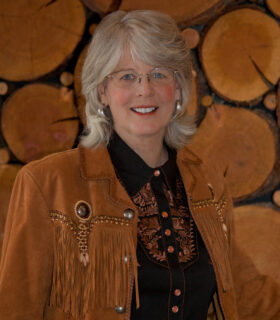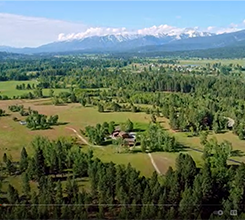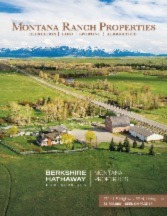Waving on the Back Roads of Montana

Doing the Wave
By Dave Reese
Published – Unkown
Now the single – finger wave is an oddity that I first witnessed riding bumpy mountain roads next to my dad in his old Ford pickup. Not being quite big enough to see over the dashboard, I could never make out who he was waving at, but every once in a while, as the cloud of dust of an oncoming vehicle approached, my dad’s index finger would raise slightly off the steering wheel, then slowly drop back down and wrap itself around the wheel. This was a curious quirk of back road traveling that I never quite understood until I was well into my adult life – old enough to slow down, old enough to comprehend that the guy you’re waving at could well be your neighbor or the guy that saves your butt when you need a jump 50 mile from any paved road. But in our world of sport utility vehicles, lattes and cell phones, a dirt road for some of us have become nothing more than a bumpy, dusty pain in the butt on our way to do whatever it is we use our sport utility vehicles for. It is no longer a conduit on which we slow down and take in what’s around us. Yes, the dirt road is a place where people have forgotten to “do the wave”. Or perhaps, they just never learned, as I did sitting on a worn-out truck seat with the springs sticking out.
So in an effort to improve back road communication, let’s review the kind of waves you can do. Practice them at home, and use them the next time you take a drive on a country road. It’s fun to mix them up and adapt them to your own personal styles.
- The Single-Finger Wave: used when traveling at a high rate of speed, say 35 mph or more, and eye contact is minimal. Instructions: slowly raise your index finger off the steering wheel, making sure that the rest of the hand remains on the wheel. (Sometimes this wave can be complemented with a slight nod of the head for added emphasis.)
- The Two-Finger Wave: used at lower rates of speed, and when you recognize the approaching vehicle. Use the same method as the Single-Finger Wave, but add that often-maligned middle finger. Used in tandem, these two fingers can create the country effect of that ‘60s leftover, the peace sign, (Sometimes can be complemented with a slight nod of the head,)
- The Full – on Hand Wave: This should be used sparingly, and only when you know the other driver, lest you be mistaken for a drunken fool. Instructions: Keeping one hand securely on the steering wheel, raise the other hand, giving it a couple of short flips, or twitches, almost as if you were drawing a dry fly across the surface of the water. The brevity of this wave depends on the level of friendship you have with the other driver. For instance, a longer wave says ‘Hi neighbor, it’s great to see you… where’d you get the money to buy that truck?’ while a shortwave could be translated as ‘That’s a nice truck, I’ll see you at the fair.’ (Sometimes this wave can be complemented with a slight smile or grin for added emphasis.)
Those are just a few of the waves that I’ve learned and practiced over the years traveling Montana’s back roads. Feel free to try them using your own personal style to create our signature wave. One thing to keep in mind: when it comes to the changing face of Montana, remember that it’s the little things that count…




